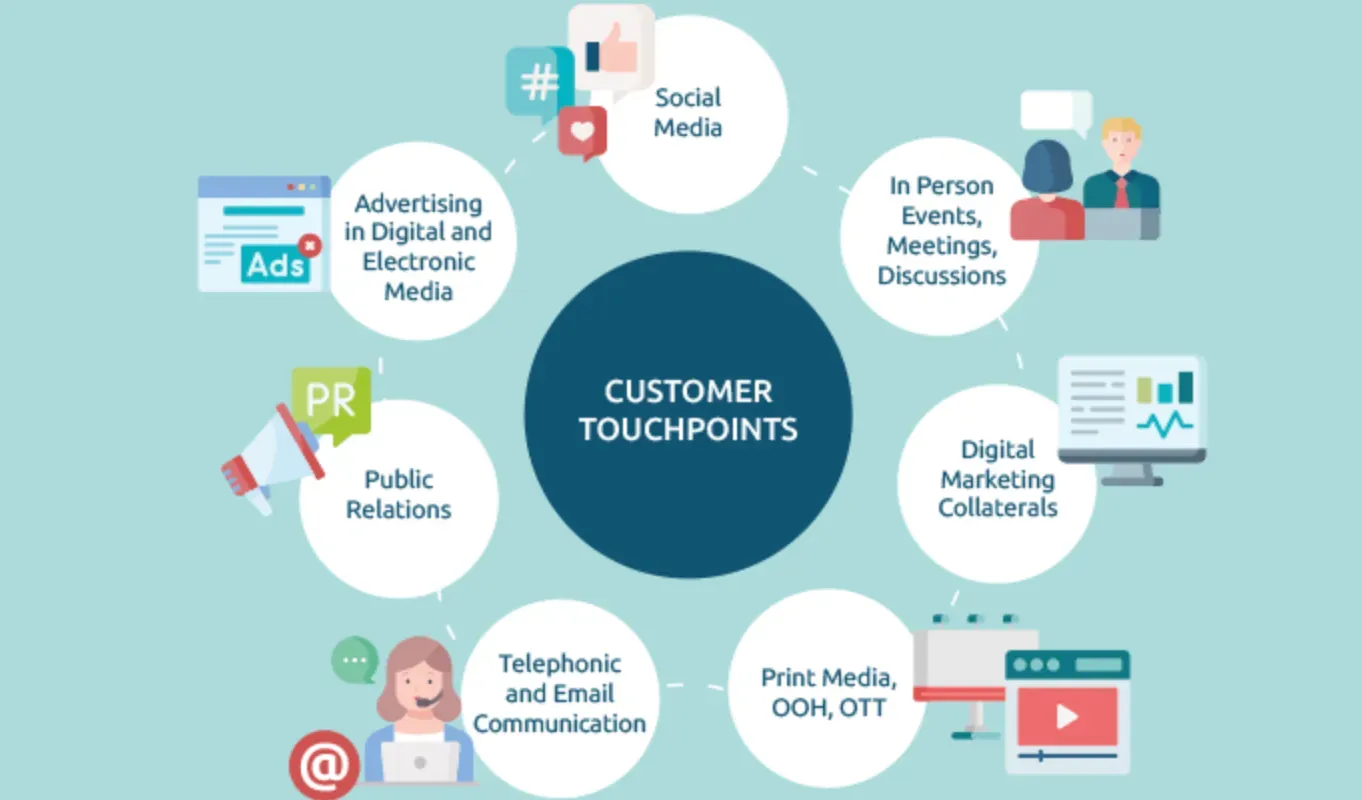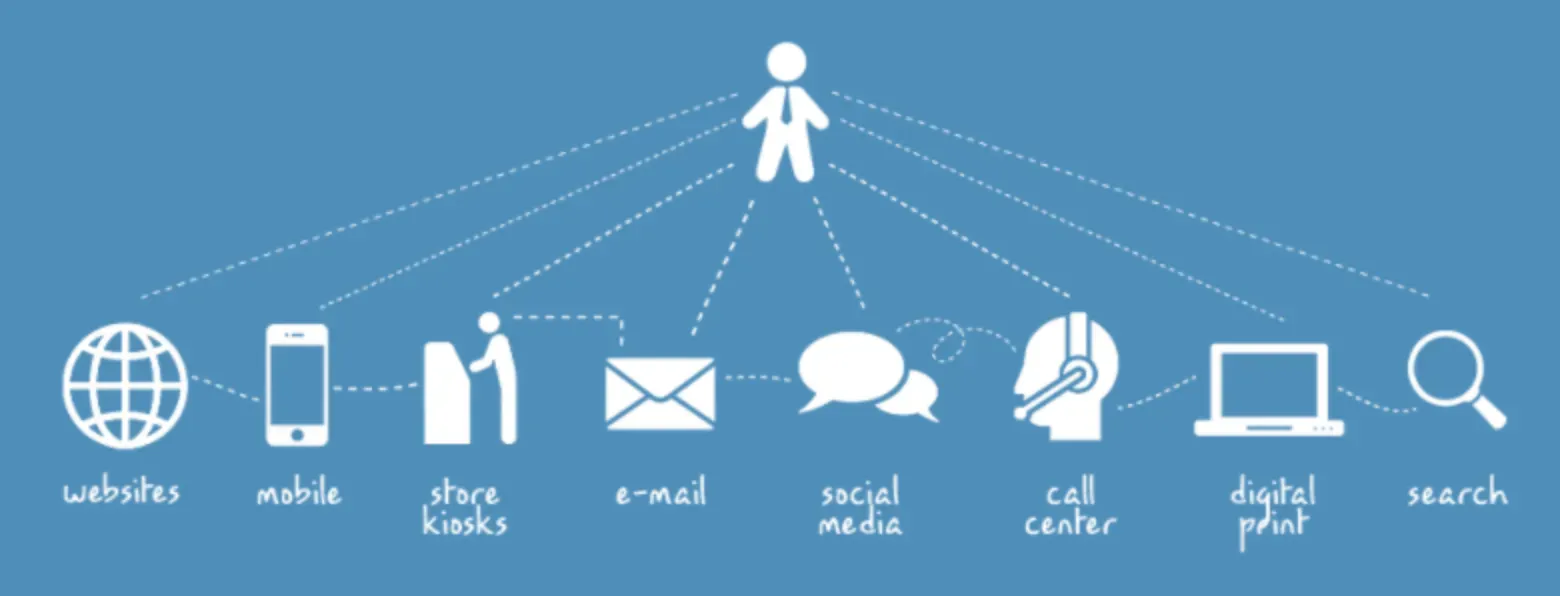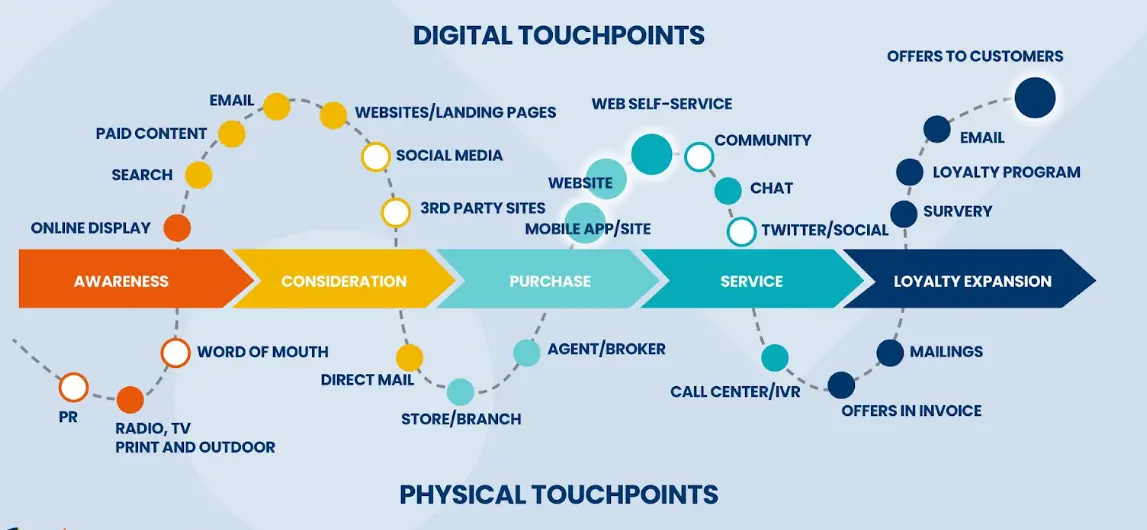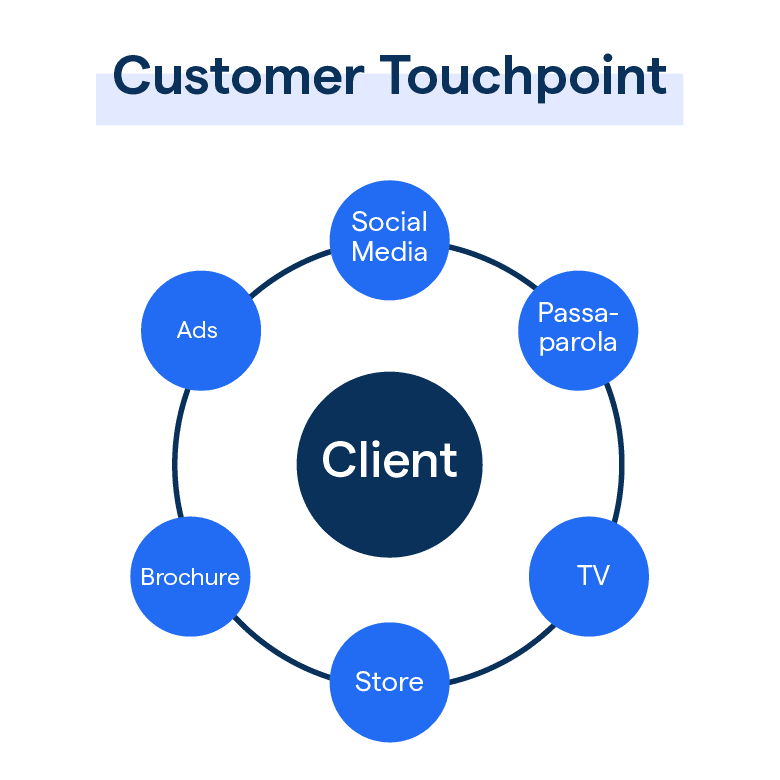What are Customer Touchpoints?
Customer touchpoints are the various points of interaction between a customer and a business. These touchpoints significantly impact the overall customer experience and shape their perception of the brand.
Touchpoints can include a wide range of interactions, such as browsing a website, reading reviews, engaging on social media, speaking with a sales representative, receiving support, or even word-of-mouth recommendations.
Why are Customer Touchpoints Important?

Customer touchpoints play a critical role in enhancing the customer experience and building strong relationships with them.
By being present and active across multiple touchpoints, businesses can effectively connect with their customers and provide a seamless omnichannel experience.
It is essential to carry conversational context across channels to ensure continuous and personalized interaction.
By strategically identifying and eliminating touchpoints that cause friction, businesses can create a positive and engaging customer journey.
Who are the Stakeholders in Customer Touchpoints?
Several stakeholders are involved in managing and maximizing customer touchpoints.
These include marketing teams, sales teams, customer service representatives, product managers, UX designers, and executives.
Each stakeholder has a crucial role to play in ensuring a positive customer experience at every touchpoint.
Where Do Customer Touchpoints Occur?
In this section, we'll cover the various locations and platforms where interactions between a business and its customers - known as touchpoints - can occur.

Website
One of the most common touchpoints, a business's website is often the primary source of information for potential customers. It's also a platform for transactions, customer support, and more.
Email serves as another crucial touchpoint. Businesses use it to communicate directly with customers, and send updates, marketing newsletters, and transaction receipts.
Social Media
Platforms like Facebook, Instagram, Twitter, and LinkedIn provide a direct line of communication between businesses and customers. They are used to share news, handle queries, and engage with the audience.
In-store
For businesses with physical locations, in-store interactions remain an important touchpoint. Here, customers can experience products firsthand and interact directly with staff.
Customer Support
The customer support department provides assistance and addresses issues, offering a vital touchpoint. This may occur through various channels, including phone, email, live chat, or social media.
Mobile Apps
Mobile apps provide another significant touchpoint, particularly for businesses with app-based services or sales. Apps can offer personalized content, easier transactions, and push notifications to engage with customers.
These touchpoints offer opportunities to provide value, gather feedback, and build relationships, ultimately enhancing the customer's journey with your business.
How to Map Customer Touchpoints?

Touchpoint mapping involves identifying and outlining every single touchpoint that customers have with a brand throughout their journey.
It helps businesses understand the flow of the customer journey, identify areas for improvement, and take necessary action to enhance the overall experience.
By mapping touchpoints, businesses can gain valuable insights into customer interactions and align their strategies accordingly.
Best Practices for Managing Customer Touchpoints
To effectively manage customer touchpoints, businesses should follow these best practices:
- Identify optimal touchpoints for creating a positive customer experience
- Eliminate touchpoints that cause unnecessary friction
- Adopt an omnichannel strategy for a seamless customer experience
- Continuously monitor and track customer interactions across touchpoints
- Provide consistent and personalized support across all channels
Common Challenges in Managing Customer Touchpoints
Managing customer touchpoints comes with its own set of challenges. Some common challenges include:
Handling real-time conversation
The challenge in managing customer touchpoints involves handling multiple conversations in real-time across various channels and touchpoints.
This requires quick and personalized responses and can get overwhelming, especially when dealing with large volumes of customer inquiries.
To overcome this challenge, businesses need to utilize tools like chatbots and automation for routine inquiries, freeing up agents' time to focus on more complex customer interactions.
Maintaining conversational context across channels
Maintaining context can be challenging when customers interact with your brand through various channels. The communication can become fragmented, and customers may not feel heard or understood.
To overcome this challenge, businesses need to unify their communication channels and maintain customer interactions in one centralized Customer Relationship Management (CRM) system.
This enables customer service agents and representatives to provide personalized and contextually relevant assistance for each customer interaction.
Creating a culture of innovation and flexibility
Customer needs and expectations are constantly changing. Adopting a customer-centric approach and being agile and adaptable to change is crucial.
This challenge requires businesses to foster a culture of innovation where new ideas and feedback are encouraged and acted upon.
By gathering customer insights and identifying changing trends, they can improve their products and services and adapt their customer touchpoints accordingly.
Ensuring consistency in messaging and branding
Inconsistency in messaging and branding across various touchpoints can be confusing and alienating for customers.
They may perceive your brand as unprofessional and confusing. Consistency in messaging and branding is crucial for building brand identity and trust.
To prevent inconsistencies, businesses need to establish clear guidelines, protocols, and communication protocols. Auditing and regular feedback can ensure messaging and branding alignment across your customer touchpoints.
Frequently Asked Questions (FAQs)
What is the purpose of mapping customer touchpoints?
The purpose of mapping customer touchpoints is to gain a better understanding of the customer journey, identify pain points and opportunities for improvement, and create more seamless and positive experiences for customers.
How can I measure the effectiveness of customer touchpoints?
To measure the effectiveness of customer touchpoints, track and analyze customer feedback, conduct surveys, monitor customer satisfaction metrics, and use analytics tools to assess the impact of touchpoints on customer behavior and business outcomes.
Can I prioritize certain customer touchpoints over others?
Yes, it is important to prioritize customer touchpoints based on their impact and relevance to your business goals.
Focus on optimizing key touchpoints that heavily influence customer perception, conversion rates, and loyalty.
What are some best practices for managing customer touchpoints?
Some best practices for managing customer touchpoints include consistently delivering on brand promises, providing a seamless omnichannel experience, being responsive and attentive to customer needs, and continuously seeking feedback to make improvements.
How can I ensure consistency across customer touchpoints?
To ensure consistency across customer touchpoints, establish clear brand guidelines and standards, provide training to employees to deliver consistently excellent service, and regularly review and update touchpoints to ensure they align with your brand values and messaging.

